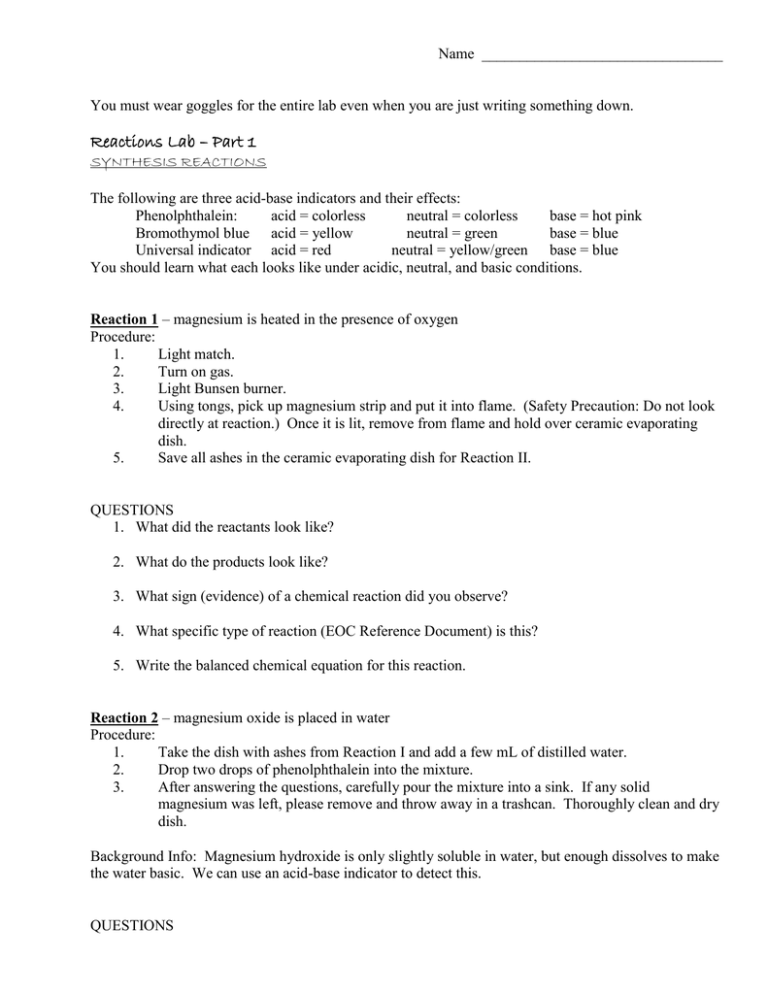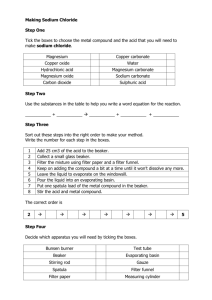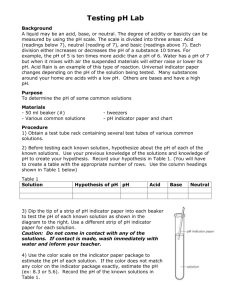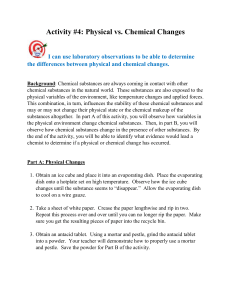Synthesis
advertisement

Name ________________________________ You must wear goggles for the entire lab even when you are just writing something down. Reactions Lab – Part 1 SYNTHESIS REACTIONS The following are three acid-base indicators and their effects: Phenolphthalein: acid = colorless neutral = colorless base = hot pink Bromothymol blue acid = yellow neutral = green base = blue Universal indicator acid = red neutral = yellow/green base = blue You should learn what each looks like under acidic, neutral, and basic conditions. Reaction 1 – magnesium is heated in the presence of oxygen Procedure: 1. Light match. 2. Turn on gas. 3. Light Bunsen burner. 4. Using tongs, pick up magnesium strip and put it into flame. (Safety Precaution: Do not look directly at reaction.) Once it is lit, remove from flame and hold over ceramic evaporating dish. 5. Save all ashes in the ceramic evaporating dish for Reaction II. QUESTIONS 1. What did the reactants look like? 2. What do the products look like? 3. What sign (evidence) of a chemical reaction did you observe? 4. What specific type of reaction (EOC Reference Document) is this? 5. Write the balanced chemical equation for this reaction. Reaction 2 – magnesium oxide is placed in water Procedure: 1. Take the dish with ashes from Reaction I and add a few mL of distilled water. 2. Drop two drops of phenolphthalein into the mixture. 3. After answering the questions, carefully pour the mixture into a sink. If any solid magnesium was left, please remove and throw away in a trashcan. Thoroughly clean and dry dish. Background Info: Magnesium hydroxide is only slightly soluble in water, but enough dissolves to make the water basic. We can use an acid-base indicator to detect this. QUESTIONS Name ________________________________ You must wear goggles for the entire lab even when you are just writing something down. 6. What did the reactants look like? 7. What do the products look like? 8. What sign (evidence) of a chemical reaction did you observe? 9. What specific type of reaction (EOC Reference Document) is this? 10. Write the balanced chemical equation for this reaction. Reaction 3 – carbon dioxide added to water Procedure/Observations: 1. Add a few drops of bromothymol blue (acid/base indicator) to a small beaker of water. Record its color. 2. Place a straw into the small beaker of water and blow gently into it until you see a change. 3. Clean up: pour contents of beaker down drain. Rinse and dry beaker. Throw away straw (and straw wrapper). QUESTIONS 11. What observations can you make? 12. What have you exhaled into the water in the beaker? 13. What kind of new substance was made? [Think about the indicator.] 14. What specific type of reaction (EOC Reference Document) is this? 15. Write the balanced chemical equation for this reaction.





